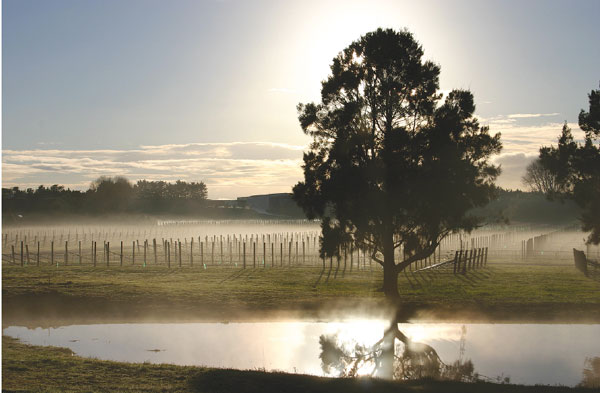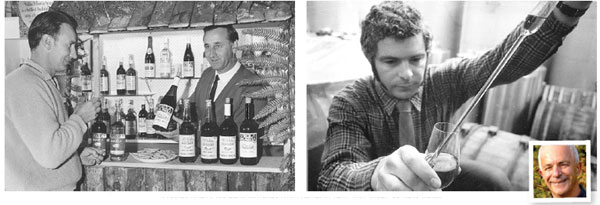Knight of the whites in land of the long white cloud
Updated: 2016-03-30 14:44
By Dong Fangyudongfangyu@chinadaily.com.cn(China Daily USA)
|
|||||||||
George Fistonich has poured his life into wine, and the accolades keep on flowing
Ninety years ago Andrija Fistonich, a young Croatian, stepped off a ship onto the wharves in Auckland, New Zealand, after a voyage of about 20,000 kilometers lasting three months.
He was one of many Croatians who left their homeland in the years after World War I as fears of another similar conflict brewed. Some went to Australia and Chile, but Fistonich chose to sail to "the land of the long white cloud", which he had heard much about in letters from his cousins who had settled there.
What he brought with him to the country, together with other Croatian immigrants, was a culture of growing grapes in home gardens and backyards, producing wine that was consumed during family meals.
Ninety years later his son George Fistonich, 76, can proudly say that he has helped bring international renown to New Zealand wines.
Most awarded
Fistonich is the founder and chief executive of Villa Maria wines, which boasts of being "New Zealand's most awarded winery".
The latest accolade came this month when it was, for a second year, the only New Zealand winery in a prestigious list of 10 most admired wine brands worldwide drawn up by Drinks International, a global drink magazine in London. The magazine polled more than 200 of the world's top masters of wine, sommeliers, wine buyers and industry experts to come up with a list of the top 100 brands.
The younger Fistonich's climb to the summit of winemaking is all the more remarkable in that his career very nearly did not happen. Instead, as a teenager he was told that his future lay in being a builder and carpenter.
His eldest brother went to university and the plan was for his young sibling to learn a trade, so when George turned 15 he began doing a building apprenticeship.
"I didn't have the passion as a carpenter and joiner," says Fistonich, talking to China Daily at his winery, not far from Auckland Airport. "Making wine is in my blood. If you love something and you've got a passion you will be a lot more successful at it than if you are doing it because you have been told to do it."
When he grew up, drinking wine was part of family life and doing work on a vineyard for the family and being involved with the Croatian community he developed an interest in wine.
However, when Fistonich first set about opening the business he was told that breaking into the wine industry would be extremely difficult, and in the event at first he made no money out of it.
"New Zealand had very much a beer drinking-culture at that time," he says. "People who did drink wine, drank French, Italian, and German wine."
Against the wishes of his father he insisted on being a winemaker, and in 1961, aged 21, he leased 2 hectares of land from his father in Auckland, and with less than half an hectare of vines he registered the name Villa Maria Wines in the same year.
In those days winemaking was almost a marginal activity limited to small family-owned vineyards. It was not until the late 20th century that the New Zealand wine industry really began to take off.
"A lot of people don't know the foundation of the New Zealand wine industry was very much based on Croatian people, who started making wines and selling them," he says.
Indeed, apart from Villa Maria, Croatian and Dalmatian names are behind many of the best-known labels in Auckland today, including the Selaks and Babich.
In 1963 Fistonich's business was given a great fillip when his second vintage won second and third prizes in the Royal Easter Show, the premier annual agricultural exhibition of the day, and over the next 50 years Villa Maria grew from a one-man show into a global brand.
Fistonich himself became a father figure to New Zealand's wine industry and in 2009 he was knighted by Queen Elizabeth II for his services to it. His business acumen had been acknowledged four years earlier when he was named the country's Entrepreneur of the Year. That award, sponsored by Ernst & Young, recognized him as one of the true innovators of the country's wine industry.
"By nature, I've alway looked for ideas," he says, although he did not realize this when he was young.
Winery restaurant
For example, one of his earliest innovations was setting up New Zealand's first licensed vineyard bar and restaurant.
It was set in the barrel hall of Vidal, a small winery in Hawkes Bay, a region on the east coast of the country's North Island, that Fistonich bought when he was initially buying grapes and he ended up buying the winery in 1976.
Fistonich recalls that in his very early days in the industry there were no such things as steel tanks; wine was made and stored in wooden barrels, but these took up a lot of room. That changed about 40 years ago when the barrels made way for stainless steel tanks, at least for storage.
At Vidal there was a beautiful barrel hall, Fistonich says.
"So I had plenty of space, and thought, 'This would make a good restaurant'. So I went to the authorities, and said, 'I've got this empty room, and want to put a restaurant in there.'"
But Fistonich says he was told: "You can't do that. Nobody's done that before."
He refused to accept this decision and after a two-year legal battle with local authorities and licensing authorities, he was granted a license in 1979 to operate in the Vidal barrel room what became a first for the country: a vineyard bar restaurant.
It was very successful and became a model for other wine companies looking to do something similar, yet it remained the only winery restaurant in the whole of New Zealand until the mid 1980s. Now there are more than 100 winery restaurants in the country, says Fistonich.
Another area in which Fistonich showed the way for his country was with bottle caps. By about 2000, cork-tainted wines and oxidization had become a thorn in the side for New Zealand's wine producers and small wineries began replacing corks with screw caps on their lower-level drops.
Fistonich went further, declaring Villa Maria a 100 percent cork-free zone, sealing all wines from the 2002 vintage onwards with screw caps.
"It was a bold move," he says, adding that it was a matter of safeguarding quality, something he was unwilling to compromise on.
Screw caps ambassador
However, persuading the world that such a move was wise was going to prove a tall order, given that in most places there is a doggedly persistent belief that good wines must be sealed by a cork.
The persistence of that misconception is evidenced by the fact that to this very day Fistonich continues to feel the need to give lectures and send out letters explaining why the practice he adopted 14 years ago makes sense.
Talking about this, he recites a sentence from the wine writer Hugh Johnson who says in his Pocket Wine Book that if screw caps had existed for the past 100 years it is fantastic how many great wines would have been sealed properly.
Fistonich attributes the nature of New Zealand's wines to the country's maritime climate.
"All of the vineyards are within 80 kilometers of the sea, and you can have very different climates from the tip of the North Island to the tip of the South Island. In Auckland we have very hot days. We can be up to 30 degrees, as far as you can go down to zero. There can be a really hot day and then a cold night, and some days sea breezes.
"So what happens is that vines ripen during the day, and then they go to sleep at night."
To ripen his grapes, Fistonich says on average it takes about an extra five or six weeks than it would elsewhere.
"It's a very slow ripening, because it sort of ripens then stops, rests, ripens a bit more. It sometimes takes a long time, and that develops a lot of fruit flavor and intensity."
This long, slow ripening period in New Zealand helps to retain the vibrant varietal flavors that make its wines so distinctive, he says.
"Sauvignon blanc in particular is very, very aromatic. New Zealand is really blessed with this beautiful climate which is almost unique in the world, and so there's nowhere else that can make sauvignon blanc that expresses it so strongly."
A chardonnay or a dry white wine from a hot climate, he says, is "bland, with a lack of acidity, and you maybe can taste the oak barrels, but you don't taste the fruit".
Sauvignon blanc is New Zealand's most commonly planted grape, accounting for more than two-thirds of its wines.
Pinot noir from central Otago in the south of the South Island is also gaining a good reputation, he says.
Last year the total value of New Zealand wines exported was a record, a little shy of $1 billion, a 14 percent increase on the previous year. Exports to China increased by nearly 10 percent. Wine is now New Zealand's sixth largest export good.
Exports are of great importance to Fistonich's business as well. About 70 percent of the company's production is exported to more than 60 countries, he says. Since 1999, Villa Maria has exported wines to China through a distributor called Summergate Fine Wines.
In New Zealand, the mainstay is white wine, whereas in China drinkers prefer red wine over white by a much bigger margin than drinkers beyond Asia do. Fistonich has been well aware of this and says this red wine dominance in China is now changing.
"We are finding new drinkers, say young women, who are likely to develop a taste for white wines like sauvignon blanc, and pinot gris."
|
The Ihumatao Vineyard shortly after planting in 2003, now home to Villa Maria's head office. Photos Provided To China Daily |
|
From left: This 1970s photo shows the dining room of George Fistonich; an early promotional tool George used to educate people about table wines. |
|
From left: A view of vineyards in New Zealand. |
|
Left: A Villa Maria tasting in 1980; Fistonich tastes one of his early vintages from barrel in 1970 and, inset, as he is today. |
(China Daily USA 03/30/2016 page10)
- US officials applaud China for nuclear cooperation
- Beyonce, Easter Bunny highlight Obama's final egg roll
- Egypt Air flight hijacked and lands in Cyprus
- Brazil party set to abandon Rousseff
- Man shot and wounded by police at US Capitol complex
- One terror suspect arrested in Rotterdam at France's request
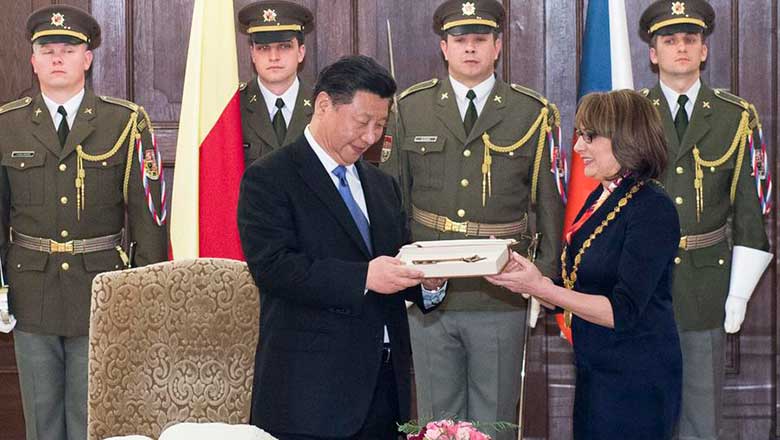
 President Xi presented with 'key to Prague'
President Xi presented with 'key to Prague'
 China move into the final stage of Asia qualifiers after 15 years
China move into the final stage of Asia qualifiers after 15 years
 Grief, anger engulf Taiwan as suspected killer of girl arrested
Grief, anger engulf Taiwan as suspected killer of girl arrested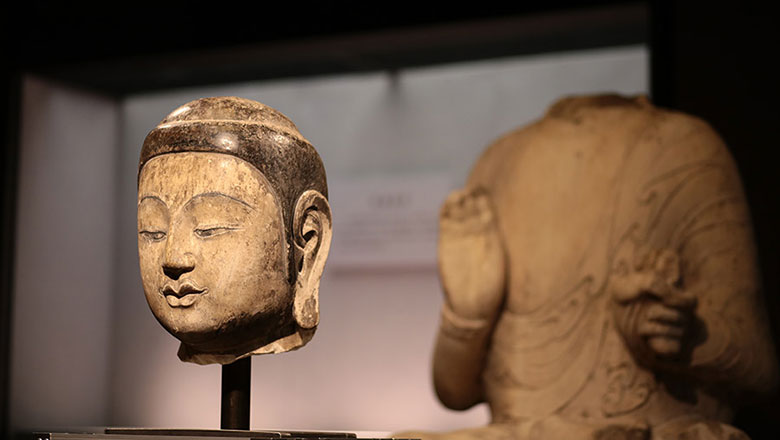
 Stolen Buddha statue head arrives in Hebei museum
Stolen Buddha statue head arrives in Hebei museum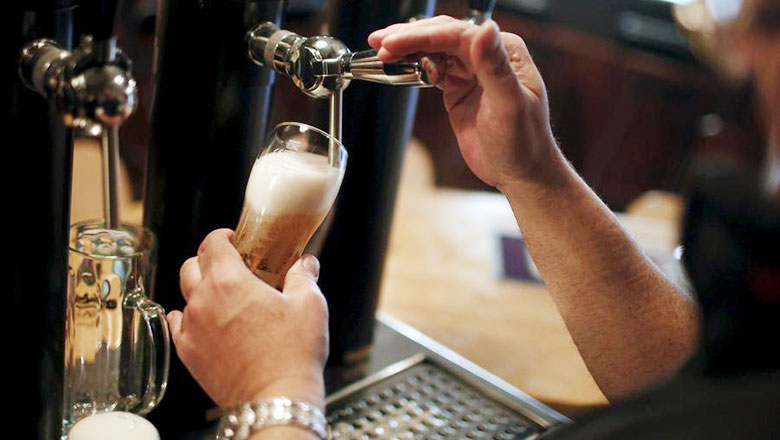
 Top 10 best-selling beers in the world
Top 10 best-selling beers in the world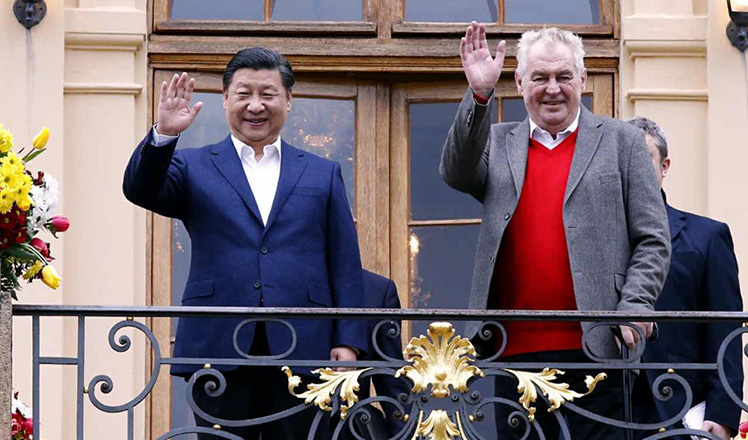
 Czech President Milos Zeman hosts Xi at private residence
Czech President Milos Zeman hosts Xi at private residence
 The snow-white world of a tombstone carver
The snow-white world of a tombstone carver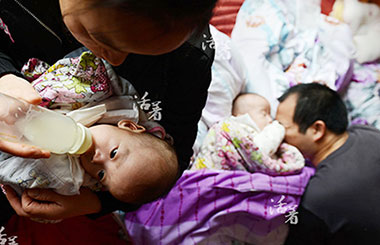
 Conjoined twins' operation bittersweet for family
Conjoined twins' operation bittersweet for family
Most Viewed
Editor's Picks

|

|

|

|

|

|
Today's Top News
Marriott unlikely to top Anbang offer for Starwood: Observers
Chinese biopharma debuts on Nasdaq
What ends Jeb Bush's White House hopes
Investigation for Nicolas's campaign
Will US-ASEAN meeting be good for region?
Accentuate the positive in Sino-US relations
Dangerous games on peninsula will have no winner
National Art Museum showing 400 puppets in new exhibition
US Weekly

|

|
